7 Must Have Elements of Every Small Business Website written by John Jantsch read more at Duct Tape Marketing
In this post – 5 Steps to Restart, Recharge and Revive Your Marketing Right Now! – I introduced an aggressive initiative to help any business owner struggling to stay on plan with their marketing for the year. The idea is to take the mid-point of the year and get a fresh restart.
In post #1 of 5, I introduced – Why You Must Refocus Your Message On Problems Not Solutions
Today we tackle Step #2 – Getting the “must have elements” on your website.
The purpose of your website
Before I can talk about the necessary elements of your website specifically, I need to address the purpose of a website.
Gone are the days of your websites just being a digital brochure for your company. A website now has many jobs including:
- Get found – The website should be optimized for search to help you get found online.
- Build trust – Your website is a key element to building trust. Once a person arrives on your website, it needs to validate their challenges. Your website needs to function the way your customers need it to and expect it to.
- Educate – Your website should teach people how to recognize what their problems and challenges are.
- Inform – Once a person has found you and trusts you, you need to inform them on how you can solve their problems.
- Nurture – Often people need to come back to your website numerous times before making a purchase. Capture their email address and continue to create valuable content that is relevant to their stage in the customer journey to nurture them through to the sale.
- Convert – A conversion can be many things from subscribing to a newsletter, to calling you, to making a purchase on your website. Conversion opportunities need to be an element of the design of your homepage to help guide the journey.
In today’s world, your customer’s journey starts by researching online. People are coming to a conclusion on their own as to whether or not they are interested in buying from you far before you even realize you are being looked at. You need to make sure you have a presence in these early research stages, and completing each of the jobs above will help you do that.
Tell a story
The main goal your website should achieve is to be able to immediately tell a story. What you may get wrong about storytelling on your website is that the story is not about YOU. The story must be the story your customers and prospects are telling themselves. They need to see themselves in the story which starts with their challenges, problems, and issues that they don’t know how to solve. You have to immediately let your website visitor see that you know what they’re struggling with and that there’s a good chance that you know how to solve it.
Guide a journey
Your website must guide your prospects through the buying process and help them decide how they should move forward. You don’t need to cover everything on your homepage, but you need to help guide your visitor to the next steps. Ask yourself what you want your visitor to do when they’re on your homepage. What actions and next steps should they take to find the solutions they’re looking for?
When you think of guiding people through your website, the design is a natural element to consider, but remember, SEO, content, and strategy need to be done in parallel with the design. In fact, many believe web design should revolve around SEO rather than the other way around.
Must have website elements
It’s time for the moment you’ve been waiting for: must have website elements. The homepage is often a prospect’s first impression of your website. Long, scrolling pages are the expectation these days so think of your homepage elements as a bit of journey. Don’t try to cram it all above the fold, let people get further and further as they scroll.
To get the most out of their visit, consider implementing the elements below.
1. The promise
This is what we worked on in the previous post. If you haven’t completed that assignment, don’t pass go here – go back and get your promise-laden headline created.
The purpose of the promise headline, above the fold on your homepage, is to show the visitor that you understand the challenges they face. You need to make them a promise that will solve their problems.
This is the promise from an SEO company – SEO is confusing to most, so the promise that we make the phone ring is a strong start.

![]()
2. Call to action
A call to action (CTA) is an image or text that prompts visitors, leads, or customers to take a specific action. CTAs help to guide people through the customer journey and advise them on next steps.
Your call to action can be to request more information, schedule a consultation, or download a free report. Make sure it’s relevant and useful – the days when people simply signed up to receive an email from you are over, but people still want to be led to useful activities and resources that get them closer to solving their problems.

![]()
![]() 3. Video
3. Video
Many companies are beginning to feature video on their homepage, and for a good reason! Video allows you to give people a real sense of who you are, what you stand for, and let people hear your story. It’s also a great way to produce content to engage your audience.
Some put this in the nice to have category, but I think it’s a must these days for small business websites.
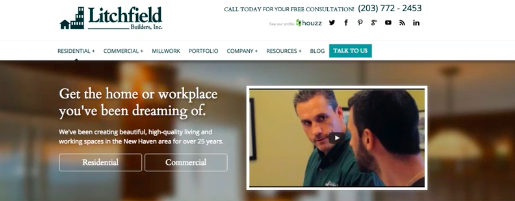
4. Trust elements
You need to have elements that build trust on your homepage, whether they be logos of current customers or testimonials for your audience to glance over. Have reviews or accolades you want your audience to see? Make them easy to find and place them on the homepage.
This is almost a content category for many businesses as things like reviews, case studies, and testimonials should be part of your ongoing content building efforts, but once you collect them use them to build trust and social proof.
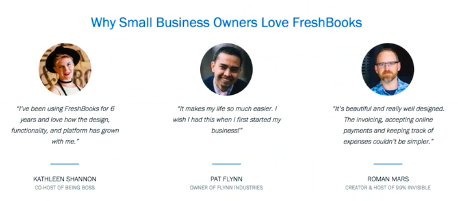
5. Changing content
It’s a good idea to feature frequently changing content from your website on your homepage. For example, place a blog or social feed on the homepage that shows recent activity. It’s a great way to show your company is active and to keep content fresh on the homepage.
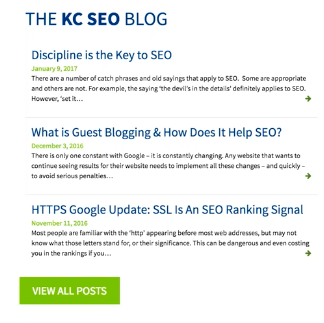
6. Content upgrades
I’ve written about this numerous times, and we will cover it in the next post because it’s that important! A content upgrade gives people the ability to download premium content in exchange for an email address or capturing a lead. This is an essential element for conversion on your website. If they download this content, this expresses interest in what you do. Take this opportunity to give them more valuable content moving forward to nurture them through to the sale.
The key is to make the upgrade, a checklist or eBook for example, highly relevant to the blog post or content where it is featured.This is an essential element for conversion on your website. If they download this content, this expresses interest in what you do. Take this opportunity to give them more valuable content moving forward to nurture them through to the sale.
This is an essential element for conversion on your website. If they download this content, this expresses interest in what you do. Take this opportunity to give them more valuable content moving forward to nurture them through to the sale.
For example, I wrote a blog post titled the 16 point checklist for the perfect blog post and created a downloadable PDF that people interested in the post could get in exchange for their email address.
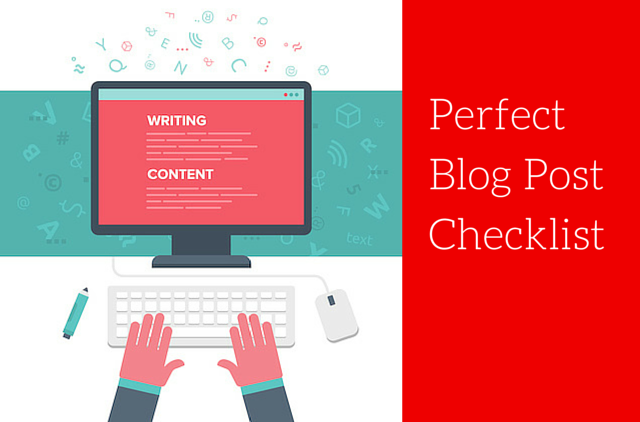
7. Core services
Create boxes that feature your core products or services and include about 100 words of content with each. Since these are your core services, you’ll likely have full pages or sections of your site related to each, but by placing them on your homepage accompanied by descriptive content, you’ll also get some additional SEO value.
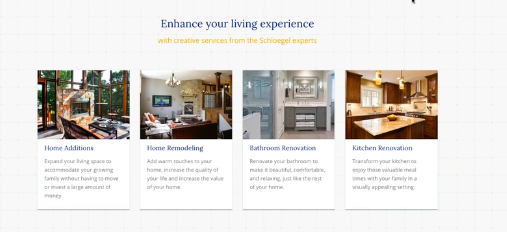
There you have it, my comprehensive list of website must-haves.
Today’s assignment: Use this to make an assessment of the missing elements on your homepage right now and create a plan to fix this!
Tomorrow we tackle your content plan – it’s how you generate leads today, but don’t worry, I’m going to make it super easy for you!
from Duct Tape Marketing https://www.ducttapemarketing.com/7-must-have-elements-of-every-small-business-website/
via IFTTT
No comments:
Post a Comment